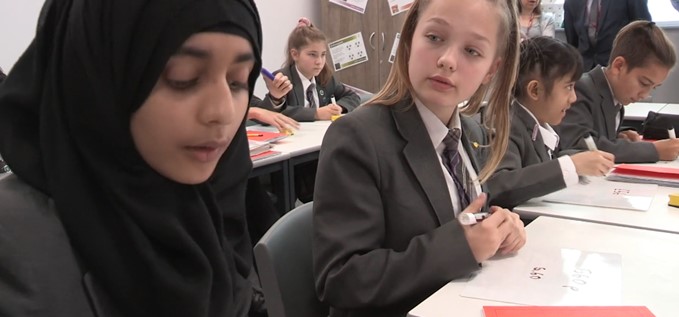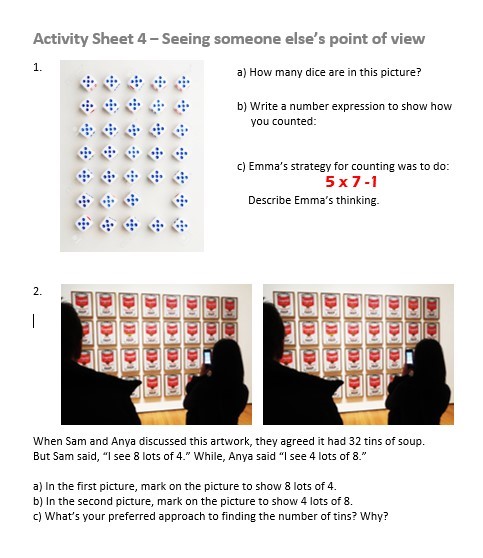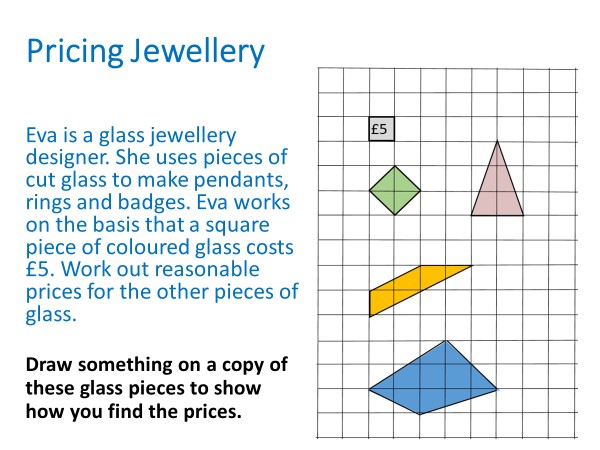“Can you say what he/she said?”
RME classrooms rely on a culture of working together.
Students develop their understanding of mathematics in an RME classroom in more ways than one. Explaining their strategies to others helps them to articulate their thinking and clarify their reasoning. But other students in the room may have a different perspective or argument which challenges their own.
 Really listening to each other helps to generate mathematical discussion and consolidates learning. Formulating another person’s idea in your own words helps to make sense of a novel insight or strategy. It also highlights contrasts between their idea and your own. As we explain on our How are RME classrooms different? page, RME classrooms emphasise listening as a key skill.
Really listening to each other helps to generate mathematical discussion and consolidates learning. Formulating another person’s idea in your own words helps to make sense of a novel insight or strategy. It also highlights contrasts between their idea and your own. As we explain on our How are RME classrooms different? page, RME classrooms emphasise listening as a key skill.
Our materials focus on the importance of listening and thinking about other points of view.
Asking students “Can you say what he/she just said?” is a simple way of developing a listening culture. Students who know that they may be asked to repeat each other’s ideas will listen carefully, and as they become used to working with RME, they are unlikely to need reminding. It can also help discussion — picking up on strategies which differ and asking students to articulate them carefully helps foster productive disagreement. A positive side effect is that of inclusion — asking “Can you say what Amira just said?” emphasises the value of Amira’s contribution. Remaining neutral about what students say encourages them to think about reasoning rather than just focusing on who is “right” or “wrong”.
 In the ‘Bargains’ lesson from Filling the Whole (PR1), students are prompted to think about the original price of a pair of jeans which are now in the sale. This context is likely to elicit the common misconception that subtracting 20% is reversed by adding on 20%. Some students might see things another way, and the slide emphasises that people might disagree. This is a good opportunity to ask students to repeat each other’s strategies as a first step in reasoning about reverse percentage. Watch this happen here.
In the ‘Bargains’ lesson from Filling the Whole (PR1), students are prompted to think about the original price of a pair of jeans which are now in the sale. This context is likely to elicit the common misconception that subtracting 20% is reversed by adding on 20%. Some students might see things another way, and the slide emphasises that people might disagree. This is a good opportunity to ask students to repeat each other’s strategies as a first step in reasoning about reverse percentage. Watch this happen here.

In this Activity Sheet from Seeing it Differently (N2), students are invited to think about how Emma would describe her approach to counting the number of dice. Writing this down on the worksheet is another way of encouraging students to be clear about how it works. The follow-up question asks them to distinguish between two ways of counting and explain which they prefer.
Teachers gain from a listening culture too

Our materials are specially designed to generate alternative strategies which students must describe and explain. In Fitting it In (G1), students are asked to think about how they would find the price of differently shaped glass pieces. Asking students to explain their strategies provides a valuable insight into their thinking.
Some teachers have found that students need extra practice in really listening. Try asking students to repeat exactly what the students in these videos are saying, and explain how their approaches are different.